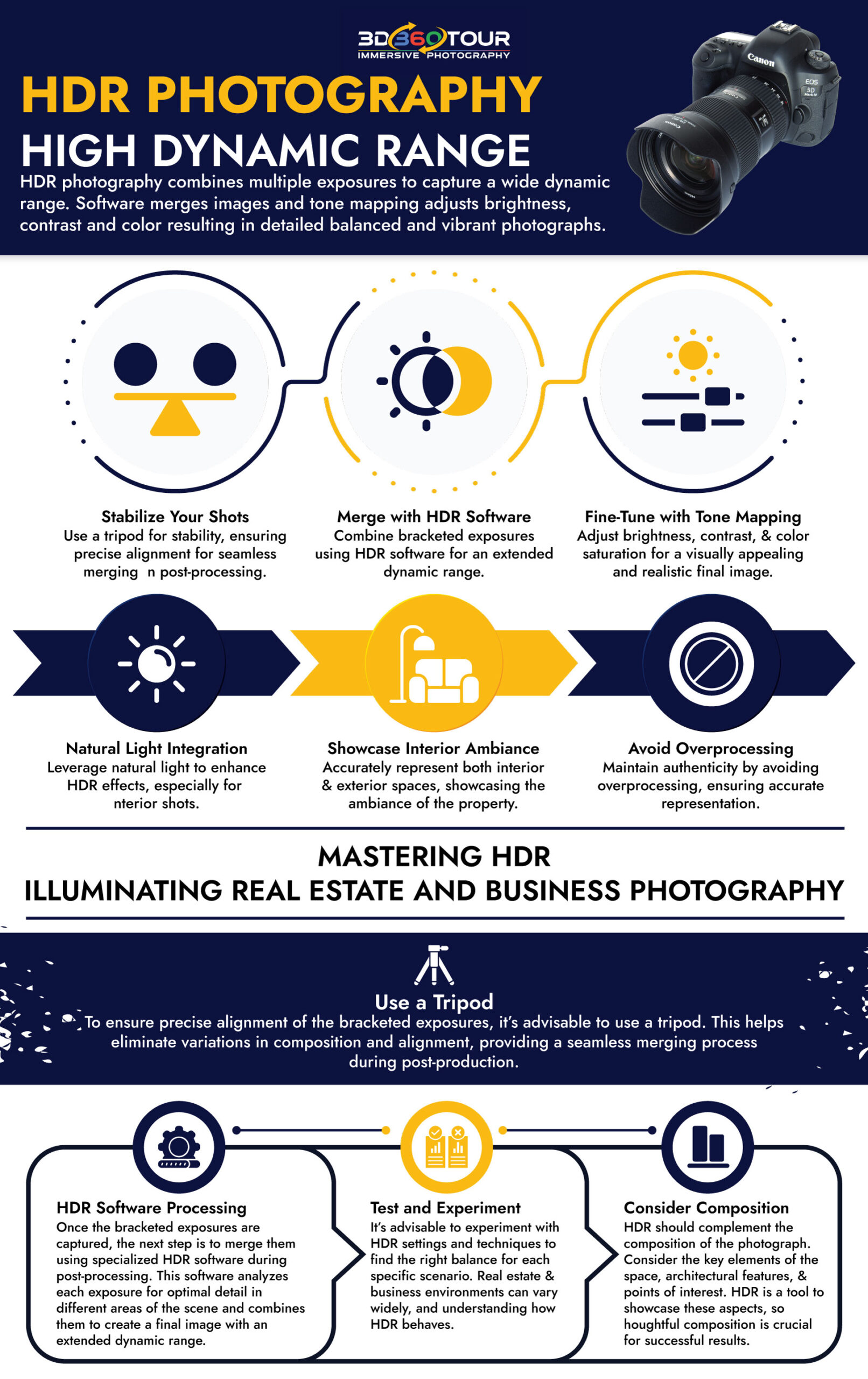
Mastering HDR: Illuminating Real Estate and Business Photography
High Dynamic Range (HDR) photography is a powerful technique that plays a crucial role in enhancing the visual impact of images in real estate and business photography. The primary goal is to overcome the limitations of traditional photography and capture a broader range of light intensities within a single frame, ensuring that both the highlights and shadows are well-represented. This is particularly important in real estate and business photography where showcasing spaces accurately is essential for attracting potential buyers or clients.
The process of implementing HDR in real estate and business photography typically involves the following steps:
Capture Bracketed Exposures: Start by capturing a series of bracketed exposures of the scene. Bracketing involves taking multiple shots of the same composition at different exposure levels. The common practice is to capture three exposures: one underexposed to preserve highlight details, one properly exposed for mid-tones, and one overexposed to capture details in the shadows. Many modern cameras offer an auto-bracketing feature, making this process more accessible.
Use a Tripod: To ensure precise alignment of the bracketed exposures, it’s advisable to use a tripod. This helps eliminate variations in composition and alignment, providing a seamless merging process during post-production.
HDR Software Processing: Once the bracketed exposures are captured, the next step is to merge them using specialized HDR software during post-processing. This software analyzes each exposure for optimal detail in different areas of the scene and combines them to create a final image with an extended dynamic range.
Tone Mapping: After merging the exposures, the photographer has the opportunity to apply tone mapping. Tone mapping allows for fine-tuning the brightness, contrast, and color saturation of the image. It helps in achieving a visually appealing and realistic final result. This step is crucial for maintaining a balance between enhancing visual appeal and representing the scene accurately.
Avoid Overprocessing: While tone mapping provides creative control, it’s important to avoid overprocessing the image. Striking a balance between enhancement and realism is key. Overly processed HDR images can appear unnatural and detract from the authenticity of the space, which is particularly critical in real estate where potential buyers seek accurate representations.
Consider Composition: HDR should complement the composition of the photograph. Consider the key elements of the space, architectural features, and points of interest. HDR is a tool to showcase these aspects, so thoughtful composition is crucial for successful results.
Minimize Ghosting: In real estate and business photography, there may be instances of movement, such as people or flowing water. HDR processing may introduce ghosting artifacts when merging bracketed exposures. Choose HDR software that includes algorithms to minimize or eliminate ghosting, ensuring a seamless and natural appearance in the final image.
Test and Experiment: It’s advisable to experiment with HDR settings and techniques to find the right balance for each specific scenario. Real estate and business environments can vary widely, and understanding how HDR behaves in different situations will contribute to consistently achieving high-quality results.
In conclusion, HDR photography significantly enhances real estate and business photography by capturing a wide dynamic range and ensuring that all aspects of a scene are faithfully represented. By following these steps and considering the unique characteristics of each space, photographers can leverage HDR techniques to create visually striking images that effectively showcase properties and commercial environments.